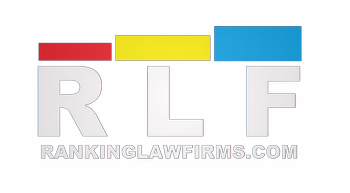Last Updated on April 4, 2024 by Ranking
A research group led by David Andersson from the Uppsala University (2023) described industrial design rights and the market value of firms. Industrial Design Rights (IDRs) are important knowledge assets in the global economy.
Previous research has focused on patents and trademarks, but there is a lack of studies on the importance of IDRs for firms’ market value.
This study examines the relationship between IDR ownership and market value for Swedish firms.
The study has limitations, including a small sample size and limited scope to Swedish firms and stock markets.
Future research should consider a more global scope and include additional variables.
5592 records were included in the research.
The authors’ results seem to support prior research in this topic: “The text discusses counterfeiting, infringement, and dilution of company brands, specifically focusing on the elasticity of trademarks in Model 6,” Andersson suggested.
However, “The study has limitations due to unobserved variables.
Control variables for time, industry, IPR, and R&D are used, but other variables like firm size, firm age, and IPR complementarity are not considered.
Using more variables in future studies is recommended,” admit the researchers.
The group recommend that Section 3 introduces the data and methodology, Section 4 presents the results, and Section 5 concludes with a discussion on limitations, further research, contributions, and implications.
- As other intellectual property rights (IPR), Industrial Design Rights (IDRs) are knowledge assets that have been suggested to serve as important drivers in the contemporary global economy (Alcacer et al, 2017; Montresor and Vezzani, 2020).
- While there is variegation of intellectual property rights into patents, trademarks and IDRs (WIPO, 2003; Galindo-Rueda and Millot, 2015; Pinate et al, 2022), until recently research has been relatively one-sided in its focus on using patents to assess the value of firms’ knowledge assets (Czarnitzki et al, 2006; Hall, 2007; Hall and MacGarvie, 2010; Hall and Oriani, 2006; Toivanen et al, 2002; Chen and Chang, 2010; Lee and Lee, 2017).
- While a recent stream of literature has provided analyses of trademarks in relation to patents that show both their economic value (Dosso and Vezzani, 2020; Sandner and Block, 2011) and important theoretical implications for innovation research in particular with respect to market innovations (Castaldi and Dosso, 2018; Castaldi, 2020; Castaldi and Mendonça, 2022), there is still a dearth of studies that assess the relative importance of IDRs for the market value of firms.
- This study serves as a first attempt to investigate the relationship between IDR ownership and firms’ market value and is associated with several limitations that can be addressed in future research.
- Sandner and Block (2011) find a considerably lower elasticity, of 2.75%, compared to the 7.50% we obtained. This elasticity can be interpreted as a 100% increase in R&D intensity has a positive impact of 7.50% on the firm’s market value.
- The study is limited to Swedish firms and Swedish stock markets. One drawback of this sample in conjunction with strictly selecting firms that owns three different types of IPR is that the number of observations drop.
Introduction
As other intellectual property rights (IPR), Industrial Design Rights (IDRs) are knowledge assets that have been suggested to serve as important drivers in the contemporary global economy (Alcacer et al, 2017; Montresor and Vezzani, 2020).
There is substantial value accumulations associated with IPR and the U.S Chamber of Commerce Global Innovation Policy Center 2022 suggests that ‘‘America’s IP is worth $6.6 trillion, more than the nominal GDP of any other country in the world’’.
While there is variegation of intellectual property rights into patents, trademarks and IDRs (WIPO, 2003; Galindo-Rueda and Millot, 2015; Pinate et al, 2022), until recently research has been relatively one-sided in its focus on using patents to assess the value of firms’ knowledge assets (Czarnitzki et al, 2006; Hall, 2007; Hall and MacGarvie, 2010; Hall and Oriani, 2006; Toivanen et al, 2002; Chen and Chang, 2010; Lee and Lee, 2017).
While a recent stream of literature has provided analyses of trademarks in relation to patents that show both their economic value (Dosso and Vezzani, 2020; Sandner and Block, 2011) and important theoretical implications for innovation research in particular with respect to market innovations (Castaldi and Dosso, 2018; Castaldi, 2020; Castaldi and Mendonça, 2022), there is still a dearth of studies that assess the relative importance of IDRs for the market value of firms.
IDR applications had doubled in ten years and constituted about a fifth of global trademark applications (4.87 million) and less than half of patent applications (2.57 million).
Industrial design applications which were lower in absolute terms than applications for the more-favored IP tools of patents and trademarks have grown even faster than FDI for substantial parts of the decade’’ (Alcacer et al, 2017, p. 166).
Objectives
Given the recent attention that design has attracted in innovation studies, and the rapidly increasing use of IDRs by firms, the aim of this paper is to examine further how ownership of IDRs relate to firms’ market value.
Methods
The authors analyze IDRs and other IPRs owned by Swedish firms.
Few, if any, previous studies estimating IPR, and IDRs, and market value of firms use Swedish data.
Sweden repeatedly ranks as one of the world’s most innovative countries, with high levels of R&D input, output and efficiency (Cornell et al, 2017).
With respect to design, Galindo-Rueda and Millot (2015, p. 11) estimate that the Swedish design industry was the fifth largest in Europe in 2011.
Examining RCD registrations and relating them to GDP, Filitz et al (2015, p. 1196) single out Sweden with Austria, Denmark and Switzerland as strong countries.
Ownership of shares in companies quoted on Swedish stock exchanges is fairly international, the proportion of non-Swedish ownership rose from 34% in 2003 to 41% in 2013 (Statistics Sweden, 2022).
To further highlight the relative spread of opportunities for investment in Swedish companies, several of the major Swedish engineering-based multinationals are listed on overseas stock exchanges.
The authors submit that the Swedish financial context and Swedish firms is suitable for a study of the value of design rights, despite the relative small number of observations that can be obtained.
Findings
Registered Community Designs (RCD)-applications filed with the EUIPO grew by 160% between 2003 and 2016.
This study serves as a first attempt to investigate the relationship between IDR ownership and firms’ market value and is associated with several limitations that can be addressed in future research.
Some of these limitations concerns the empirical data while others are associated with the analytical approach.
The authors cannot claim to have complete IPR portfolios for the firms in the study as they might own IPRs in countries outside of Sweden or the EU.
Future research would benefit from a more global scope (Alcacer et al, 2017) which would allow for taking into account variegated jurisdictional regulations and procedures with respect to IDRs. The study is limited to Swedish firms and Swedish stock markets.
The study is limited to Swedish firms and Swedish stock markets
One drawback of this sample in conjunction with strictly selecting firms that owns three different types of IPR is that the number of observations drop.
Arguably Sweden is an interesting context due to its design-intensity, general innovativeness and the international presence of investors, attractiveness and expectations among investors may be biased.
Further studies in other countries and institutional settings are necessary to validate and generalize the findings presented here.
Another potential limitation of the study is the unobserved variables.
The authors employ control variables for time, industry, IPR and R&D, but do not consider other potentially important variables such as firm size, firm age and IPR complementarity that might affect firms’ market value.
The set of variables the authors use is similar to those used in other studies in the field (Hall et al, 2005, 2007; Sandner and Block, 2011; Rahko, 2014), but using more variables in future studies is desirable.
Source: David Andersson; Anton Ekman; Anton Huila et al.




